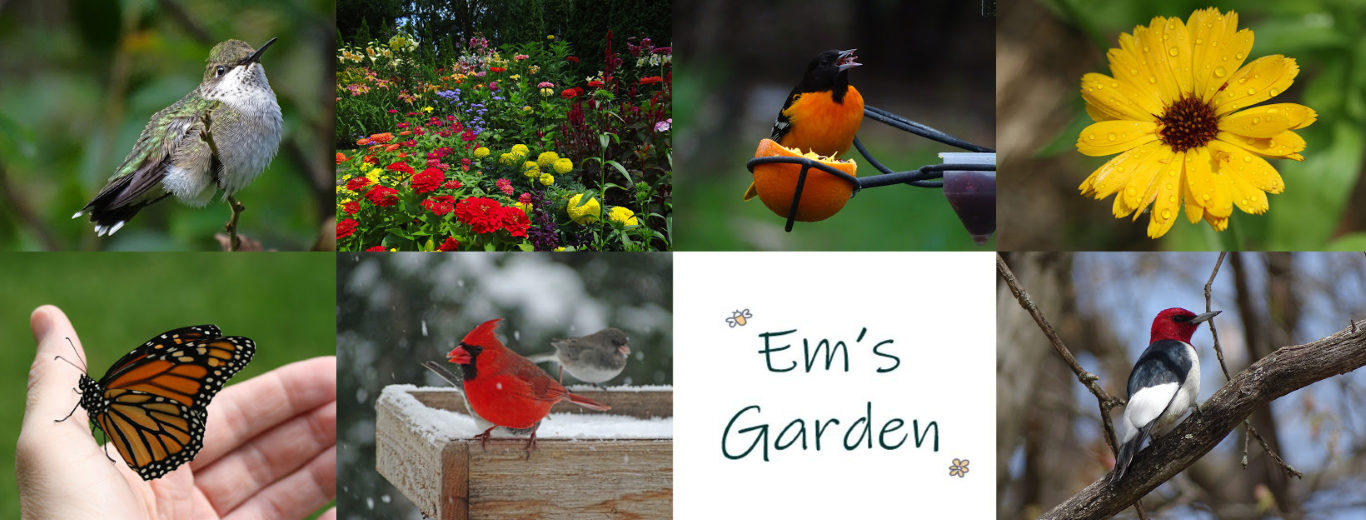Bee balm (Monarda) is a perennial that prefers moist, well-drained soil. This is ‘Raspberry Wine’:
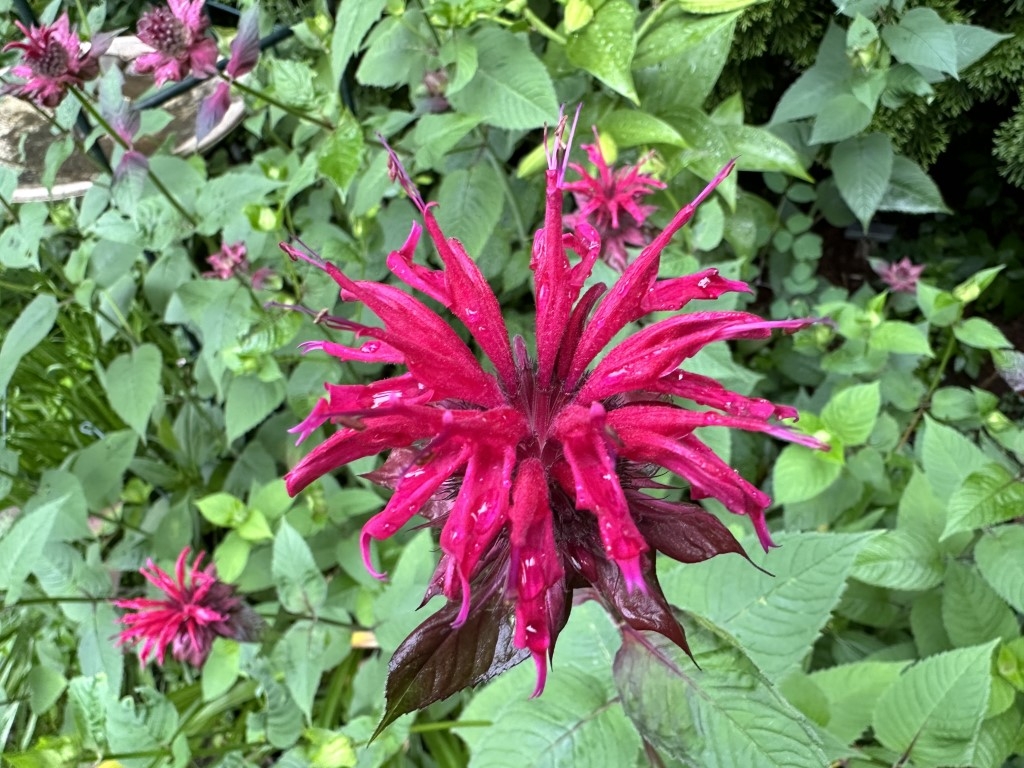
Over the last couple of growing seasons my area has experienced drought or extremely dry conditions, and this plant had shrunk to just a few flower stalks (even with regular watering). But after mother nature dumped rain on my plants for weeks on end this spring, ‘Raspberry Wine’ came roaring back.
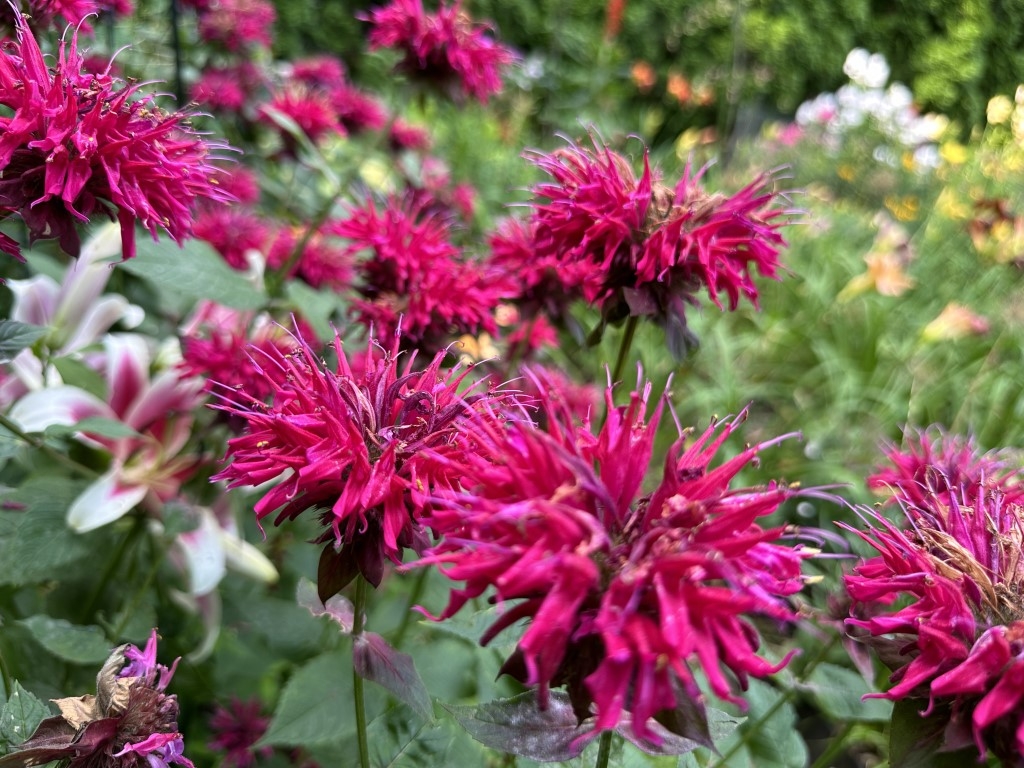
In fact all my bee balm plants put on an impressive display, and in some flowerbeds I had plants flowering that I didn’t even remember planting there. They must’ve stayed dormant during the drought.
Another one of my favorite bee balm cultivars is ‘Purple Rooster’. I have several plants and they also loved the rain and flowered more than usual.

Like perennial phlox, bee balm can be susceptible to powdery mildew, but both ‘Purple Rooster’ and ‘Raspberry Wine’ are resistant cultivars, and most years my plants show little or no signs of the disease.
Bee Balm got its name for a reason—it’s a bee magnet!
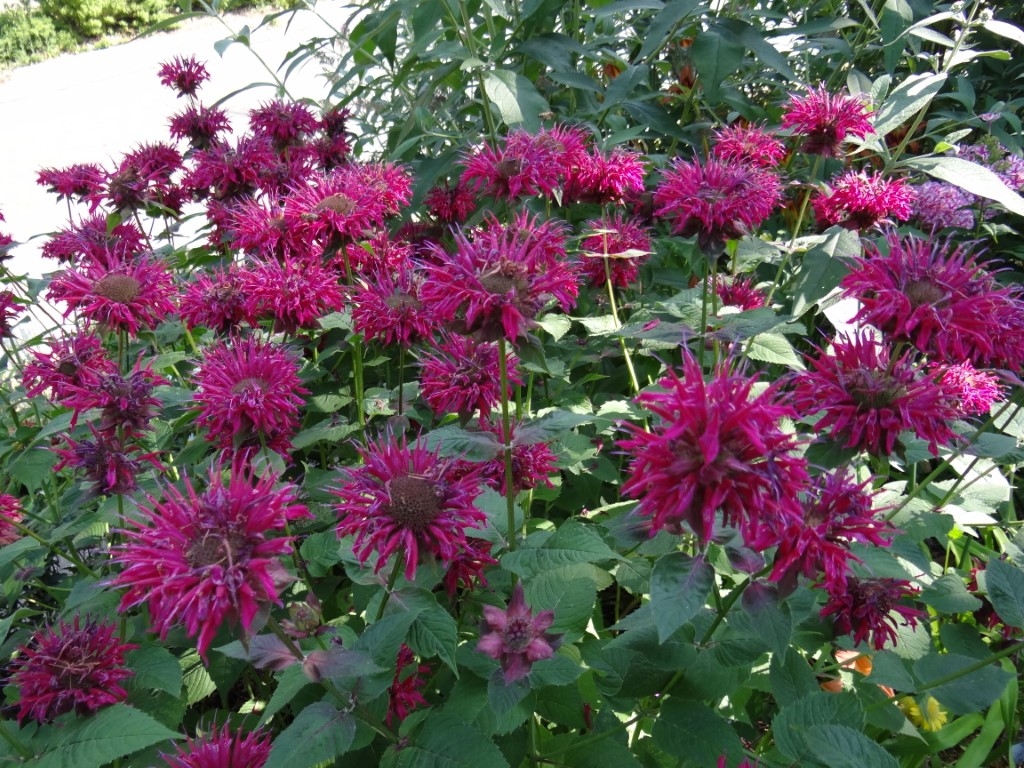
My neighbor has switched to growing all native plants in her yard, so thanks to wind and birds and other ways for plants to spread, I often find volunteer plants popping up in my flowerbeds—including native bee balm.
There are more than a dozen native bee balm species in North America, but the one that has escaped to my yard from my neighbor’s is wild bergamot (Monarda fistulosa) which has light lavender, pink or white flowers. This species grows in the Midwest and is often seen growing along roadsides or in prairies.
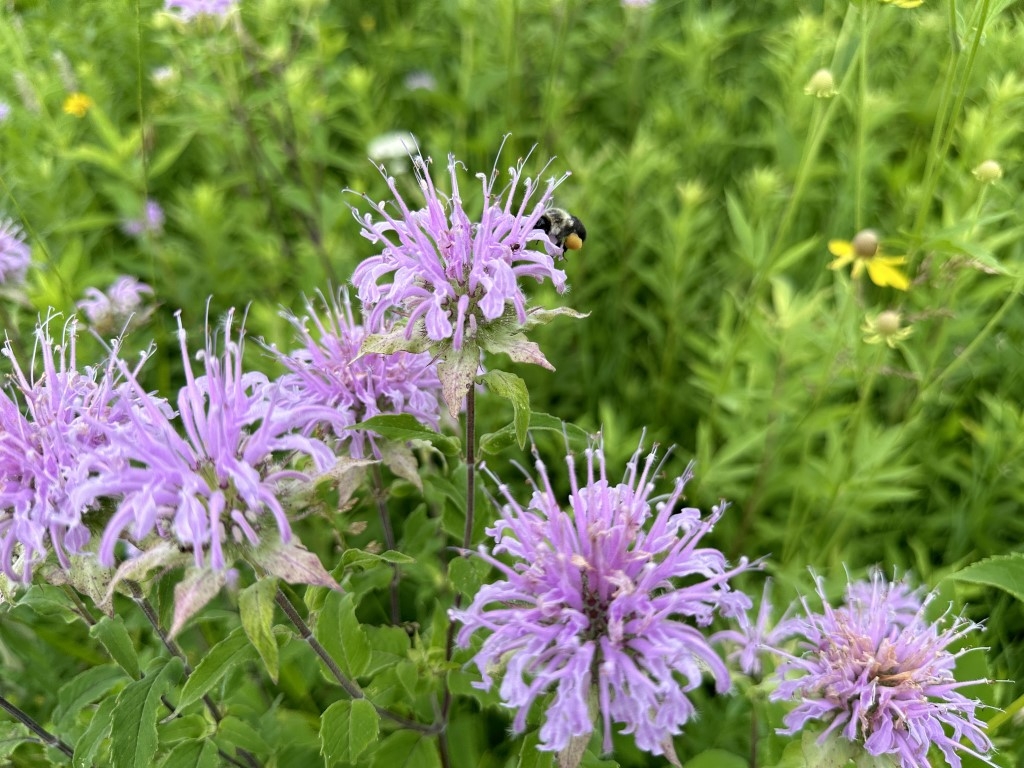
Another benefit of growing Bee Balm is that hummingbirds love it. When the tiny birds visit my yard, the first perennial they fly to is usually cardinal flower, but the second is bee balm.
Bee balm is easy to find for sale in garden centers in the spring. You can learn more about some of the best, most disease-resistant cultivars here.
